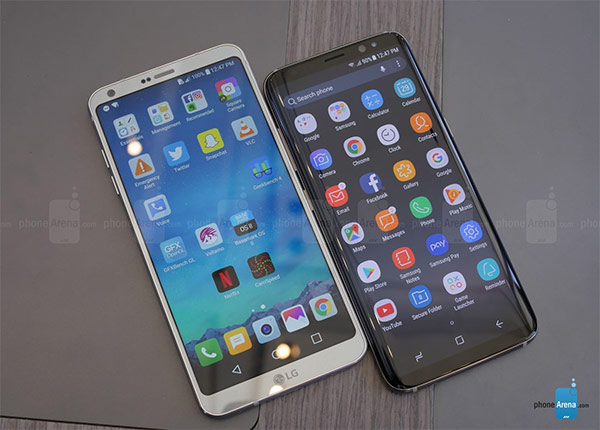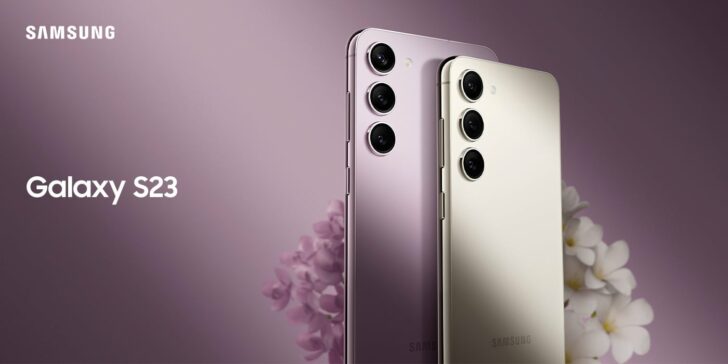If you own a Samsung Galaxy S8 or Galaxy S8 Plus and are experiencing the frustrating “No Service” error, you’re not alone. This issue can occur for various reasons, including software glitches, network problems, or hardware malfunctions. But fear not, as we are here to guide you through the troubleshooting process and help you resolve this problem. In this comprehensive guide, we will walk you through step-by-step instructions to fix the “No Service” error on your Samsung Galaxy S8 and Galaxy S8 Plus.
Restart Your Device
Sometimes, a simple restart can solve the “No Service” error on your Samsung Galaxy S8 or Galaxy S8 Plus. Follow these steps to restart your device:
- Press and hold the power button until the power menu appears.
- Tap on the “Restart” option.
- Wait for your device to restart and check if the “No Service” error persists.
If the issue persists after restarting your device, proceed to the next section for further troubleshooting steps.
Check Your Network Settings
Incorrect network settings can sometimes lead to the “No Service” error. To ensure that your network settings are correctly configured, follow these steps:
- Open the “Settings” app on your Samsung Galaxy S8 or Galaxy S8 Plus.
- Scroll down and tap on “Connections.”
- Tap on “Mobile networks.”
- Ensure that the “Mobile data” toggle is turned on.
- Tap on “Network operators” and select “Automatic.”
- Wait for your device to search for available networks.
- Once the search is complete, select your network operator.
If the “No Service” error persists, move on to the next section for additional troubleshooting steps.
Update Your Device’s Software
Outdated software can sometimes cause network-related issues on your Samsung Galaxy S8 or Galaxy S8 Plus. To check for software updates and install them, follow these steps:
- Open the “Settings” app on your device.
- Scroll down and tap on “Software update.”
- Tap on “Download and install” to check for available updates.
- If updates are found, follow the on-screen instructions to download and install them.
- Once the update is complete, restart your device and check if the “No Service” error is resolved.
If the issue persists after updating your device’s software, proceed to the next section for further troubleshooting steps.
Reset Network Settings
Resetting your network settings can help resolve network-related issues, including the “No Service” error. However, please note that resetting network settings will remove all saved Wi-Fi networks, Bluetooth pairings, and VPN settings. To reset your network settings, follow these steps:
- Open the “Settings” app on your Samsung Galaxy S8 or Galaxy S8 Plus.
- Scroll down and tap on “General management.”
- Tap on “Reset.”
- Select “Reset network settings.”
- Tap on “Reset settings” to confirm.
After resetting your network settings, set up your Wi-Fi networks and other network-related configurations again. Check if the “No Service” error is resolved.
Check SIM Card and SIM Tray
The “No Service” error can sometimes occur due to a faulty SIM card or SIM tray. Follow these steps to check and ensure that your SIM card and SIM tray are properly inserted:
- Power off your Samsung Galaxy S8 or Galaxy S8 Plus.
- Locate the SIM card tray on the top edge of your device.
- Use the SIM ejection tool (or a paperclip) to eject the SIM card tray.
- Carefully remove the SIM card from the tray.
- Inspect the SIM card for any visible damage or dirt.
- Clean the SIM card using a soft cloth or tissue.
- Insert the SIM card back into the tray, ensuring it is properly aligned.
- Gently push the SIM card tray back into the device until it clicks into place.
- Power on your device and check if the “No Service” error is resolved.
If the issue persists after checking and reinserting the SIM card, move on to the next section for additional troubleshooting steps.
Perform a Factory Reset
Performing a factory reset should be your last resort if all other troubleshooting steps have failed to resolve the “No Service” error on your Samsung Galaxy S8 or Galaxy S8 Plus. Please note that a factory reset will erase all data on your device, so make sure to back up your important files and contacts before proceeding. To perform a factory reset, follow these steps:
- Open the “Settings” app on your device.
- Scroll down and tap on “General management.”
- Tap on “Reset.”
- Select “Factory data reset.”
- Tap on “Reset” to confirm.
- Enter your device’s PIN or password, if prompted.
- Tap on “Delete all” to initiate the factory reset process.
Once the factory reset is complete, set up your device again and check if the “No Service” error is resolved.
Contact Your Network Provider
If none of the previous troubleshooting steps have resolved the “No Service” error on your Samsung Galaxy S8 or Galaxy S8 Plus, it is recommended to contact your network provider for further assistance. They may be able to provide specific troubleshooting steps or determine if there are any network issues in your area.
Additional Tips and Recommendations
Here are some additional tips and recommendations to prevent or minimize the occurrence of the “No Service” error on your Samsung Galaxy S8 or Galaxy S8 Plus:
- Keep your device’s software up to date by regularly installing the latest updates.
- Avoid installing unreliable or suspicious apps that may interfere with your device’s network connectivity.
- Remove and reinsert your SIM card periodically to ensure a secure connection.
- Keep your device and SIM card clean by regularly wiping them with a soft cloth or tissue.
- Consider using a protective case to prevent physical damage to your device and SIM card.
Conclusion
Experiencing the “No Service” error on your Samsung Galaxy S8 or Galaxy S8 Plus can be frustrating, but with the troubleshooting steps outlined in this guide, you should be able to resolve the issue. Remember to start with simple solutions like restarting your device or checking your network settings before proceeding to more advanced troubleshooting steps like resetting network settings or performing a factory reset. If all else fails, don’t hesitate to reach out to your network provider for further assistance.








